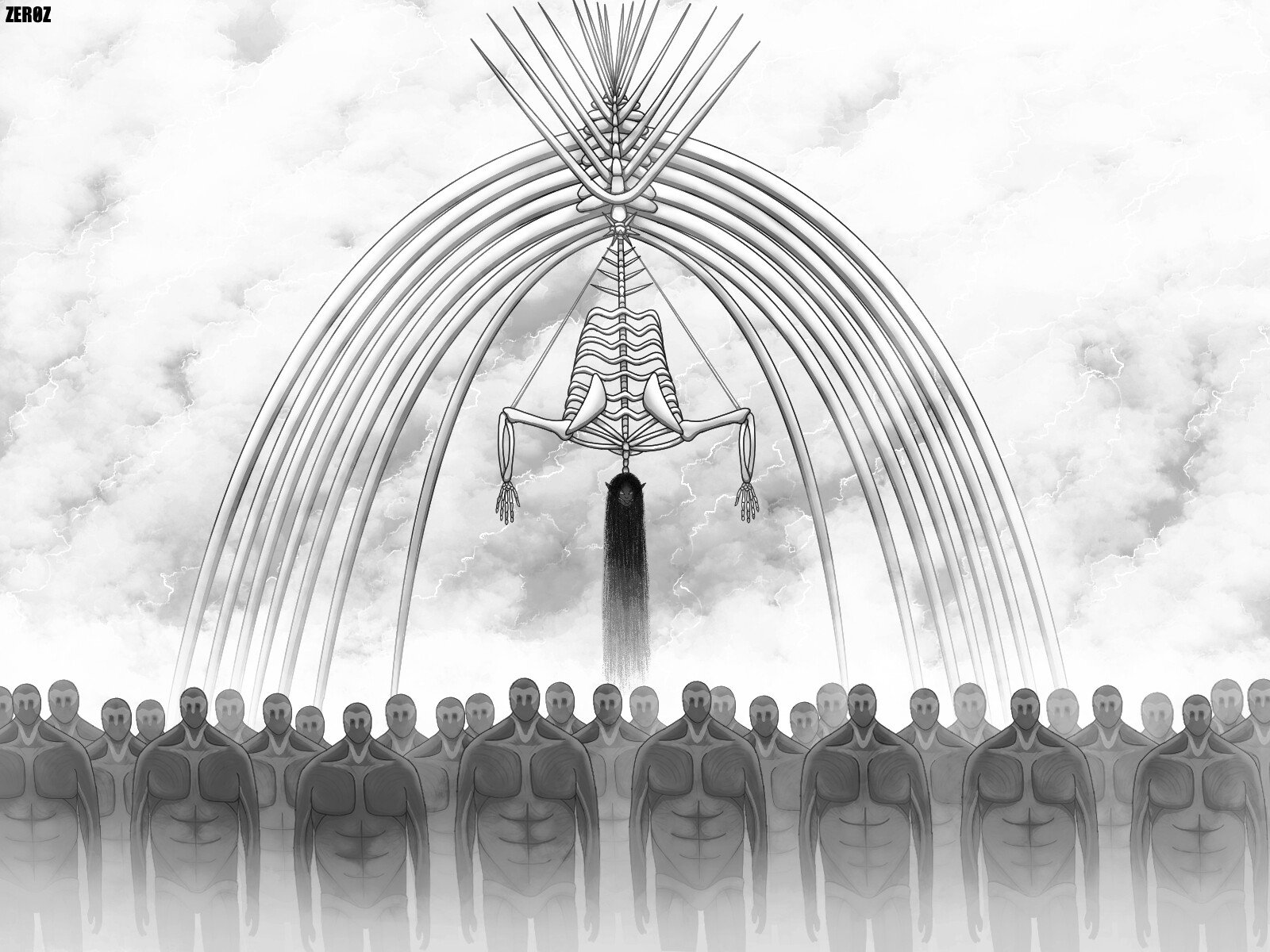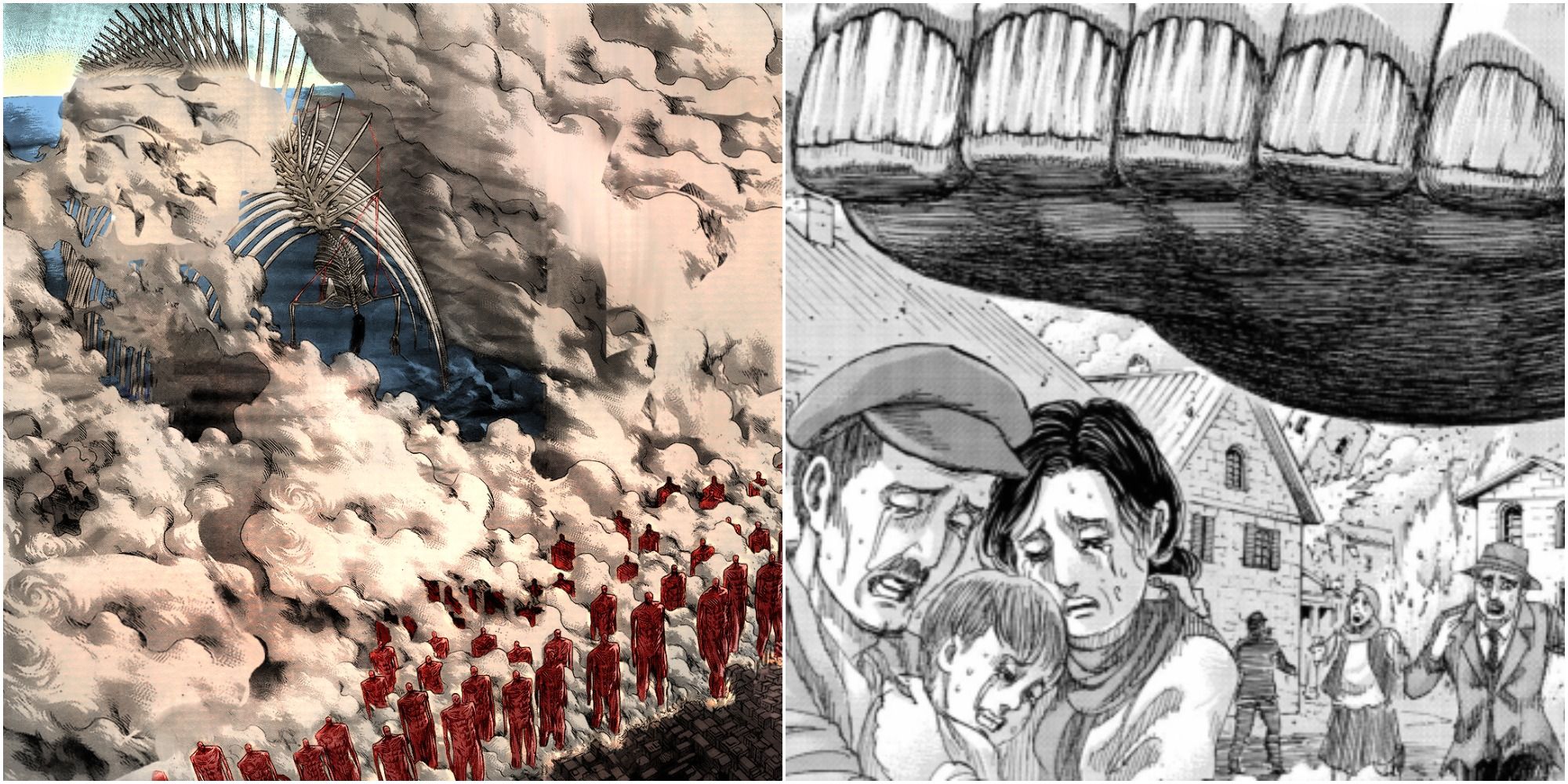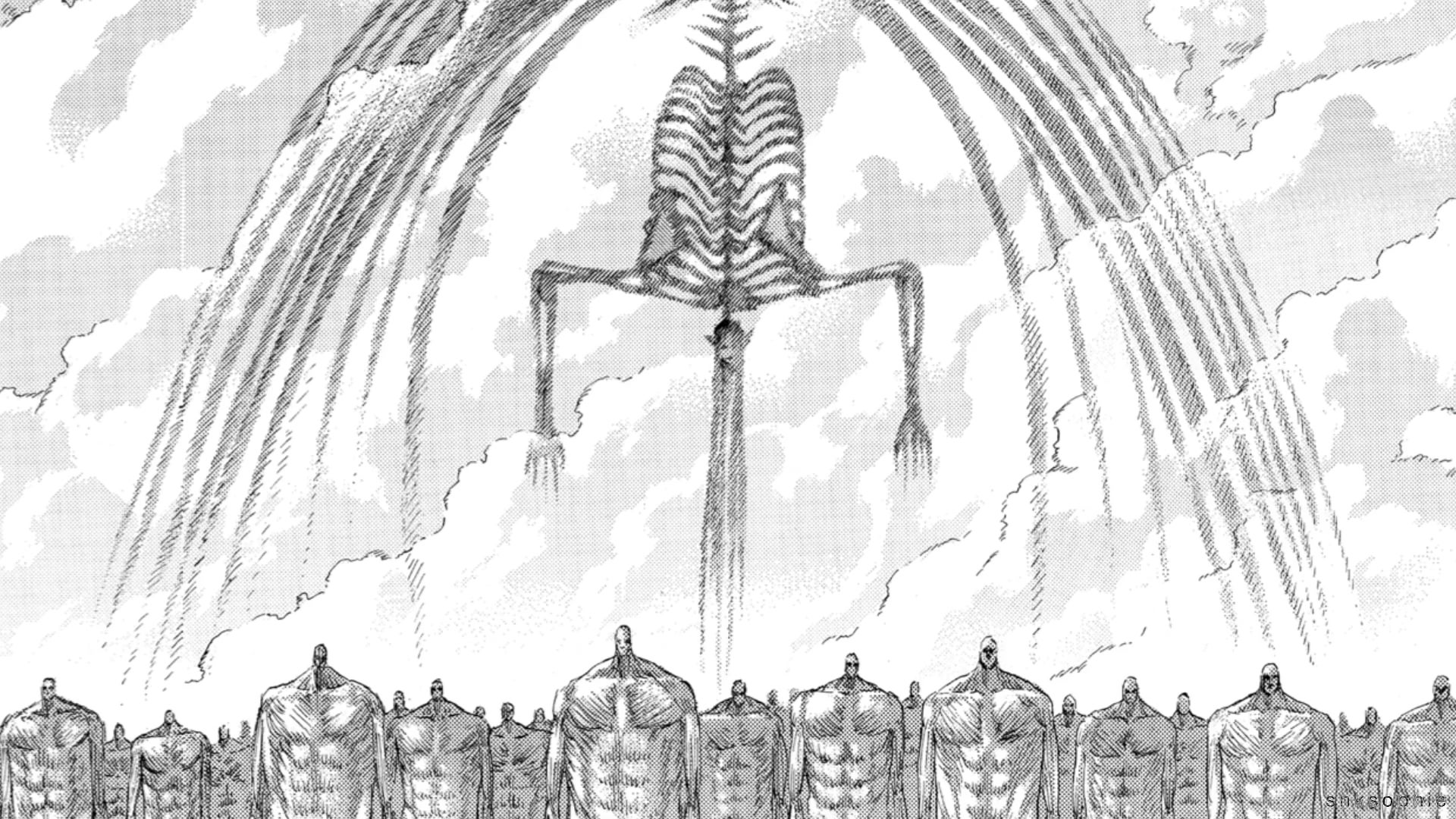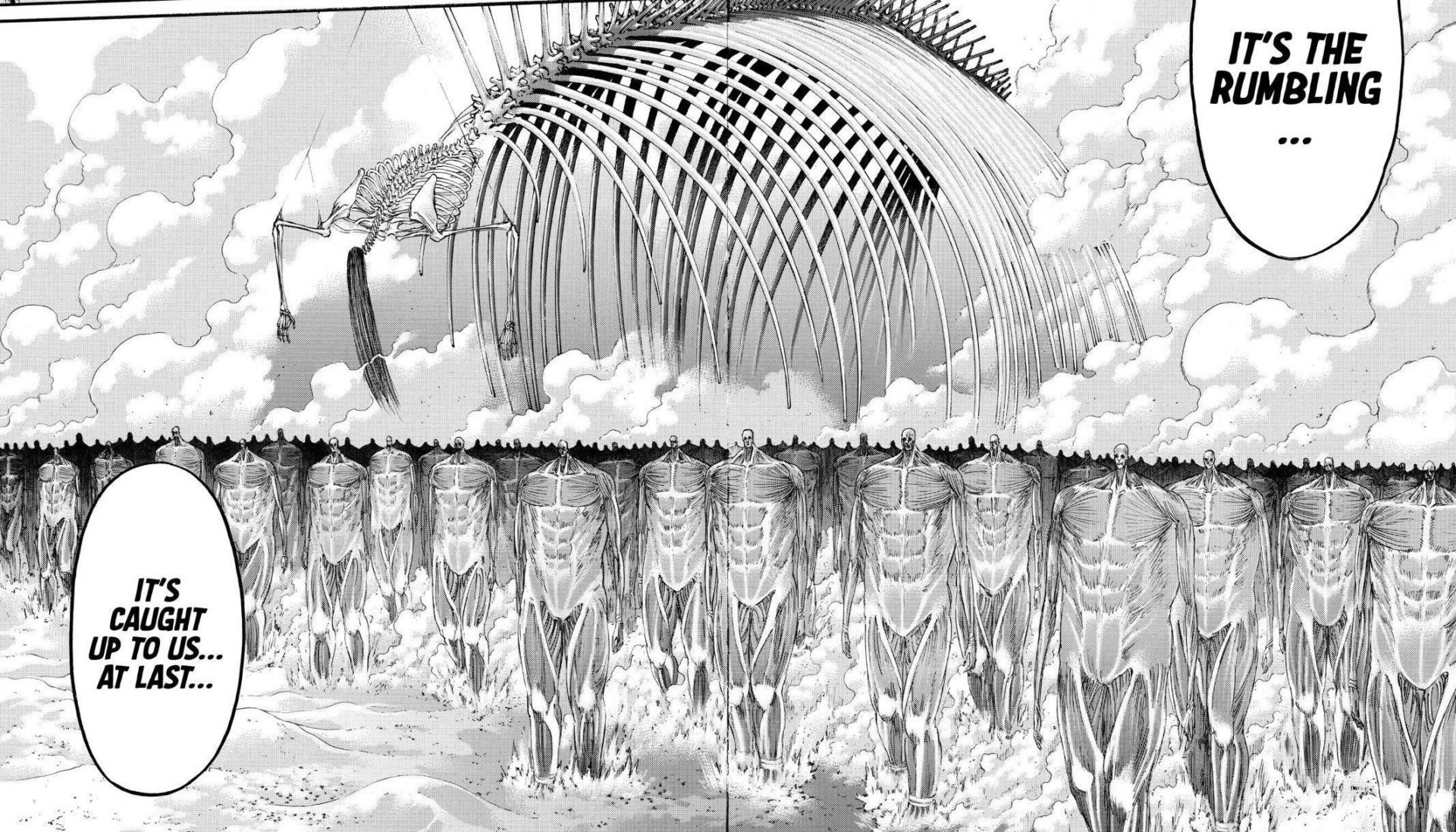The Rumbling, a pivotal concept in Attack on Titan, stirs both excitement and dread among fans. It's not just a plot device; it's an exploration of morality, power, and survival. As colossal Titans begin their march, questions arise about freedom, sacrifice, and the costs of vengeance. In this blog post, we'll break down the mechanics behind the Rumbling and what it means for our beloved characters and their world. Let’s dive in!
The Origins of the Rumbling Concept

To truly grasp the significance of the Rumbling, we must first explore its origins within the storyline of Attack on Titan. The Rumbling is rooted in a deep, historical context that intertwines with the lore of Eldians and Marleyans.
Initially, the Rumbling was introduced as a last-resort weapon primarily used by the Eldian people. It symbolizes a cataclysmic consequence of humanity's struggles—embodying both revenge and survival. At its core, the Rumbling is executed by unleashing the Founding Titan’s abilities, allowing the user to command the Wall Titans.
Here are some key historical points that highlight the concept's evolution:
- The Founding Titan: The origin of the Rumbling is closely tied to the Founding Titan and the powers it possesses. This Titan can manipulate the memories of Eldians and control other Titans.
- The Walls as a Refuge: The walls built around the Eldians served two purposes: to protect them from the Titans outside while also containing the immense power of those trapped within.
- Fear of Extinction: The continuous threat from Marleyan forces propelled the Eldians to consider the Rumbling as a safeguard against complete annihilation.
In the lore, the Rumbling also serves as a metaphor for the destructive cycles of hate and vengeance. As seen through the eyes of characters like Eren Yeager, it becomes a double-edged sword. While it offers potential liberation for the Eldians, it also poses ethical dilemmas that question whether the ends truly justify the means.
The dichotomy surrounding the Rumbling showcases the complexities of the characters' motivations and the dire consequences of their decisions. Eren, determined to secure freedom for his people despite the monumental cost, embodies this internal conflict. His resolve brings about a clash of ideologies—a stark confrontation between freedom and oppression.
Throughout the series, the Rumbling serves as a pivotal narrative force, prompting discussions about morality, the cycle of hatred, and the human condition. It's fascinating to see how this concept evolves from an ancient weapon into a modern-day existential threat, challenging characters at every turn.
In summary, the origins of the Rumbling are deeply interwoven with the history and struggles of the Eldian people. It reflects their desperation while also showcasing the lengths to which individuals will go to secure their survival—often at the cost of innocent lives. Understanding these roots is crucial to comprehending the broader implications of the Rumbling within the captivating world of Attack on Titan.
Also Read This: How Long Is WWE Royal Rumble 2024 Expected to Last? Event Insights
The Mechanisms Behind the Rumbling

When we dive into the mechanics of the Rumbling in Attack on Titan, it’s crucial to break down how this cataclysmic event is set into motion. At its core, the Rumbling is a defense mechanism activated by the Founding Titan, and it’s not just about mindless titans marching—there’s a complex system at play.
Firstly, the process involves the activation of the colossal titans that are embedded in the walls surrounding Paradis Island. These colossal titans, which were initially dormant and formed part of the island’s defense, are awakened through a powerful command from the Founding Titan. This command can be issued only by someone with royal blood, making Eren Yeager's position particularly significant. As Eren possesses the Founding Titan and has access to that royal blood through Historia, he becomes the pivotal figure in unleashing this catastrophic force.
But how exactly do these titans operate during the Rumbling? It’s all about connectivity and the shared memory between the Eldians. The titans are intertwined through a shared consciousness—something that allows Eren to communicate and command them from a distance. This connection elevates the stakes and amplifies the destruction they can cause.
An interesting aspect of the Rumbling is its scale—imagine hundreds of colossal titans marching in unison, creating tremors strong enough to shatter the very ground. Each step they take is precise, driven by the innate urge to fulfill Eren’s objectives. This ideal grossly shifts the narrative, transitioning from individuals struggling for survival to an entire race wreaking havoc.
Moreover, the Rumbling serves as a manifestation of Eren’s desperation and resolve. It isn’t just a simple march; it symbolizes a drastic shift in his character arc. As viewers, we notice a dichotomy where the Rumbling embodies both a sense of protection for Eldians and an overwhelming threat to humanity. Such complexity urges us to ponder the moral implications of using such power. Are the titans merely tools in Eren’s quest, or do they represent something more significant in the history of Eldians?
In summary, the Rumbling’s mechanisms delve deep into the metaphysical connection shared among titans and their wielder. It embodies themes of control, chaos, and destruction—a devastating answer to the question of how far one will go to ensure their race’s survival.
Also Read This: How to Unlock Todoroki in Ultra Rumble
The Role of Titans in the Rumbling

The role of titans in the Rumbling is not just as mere instruments of destruction; they serve as a powerful symbol of the Eldian struggle and identity within Attack on Titan. Each titan represents a multifaceted layer of conflict, morality, and the consequences of humanity’s choices.
One of the most compelling aspects is how titans illustrate the duality of power and vulnerability. On one hand, they’re horrifying instruments of mass destruction. On the other hand, they represent the forgotten tragedies of Eldians who have been transformed into these monstrous beings. This duality showcases how the titans are not just mindless creatures; they embody the pain and suffering of individuals who have lost their humanity.
Furthermore, the titans involved in the Rumbling allow Eren to transcend his previous limitations, tapping into a reservoir of strength that was always there but never fully explored. This evolution hints at the idea that the titans are more than just feral beasts; they are a part of Eren’s character growth and the story's central theme—the search for freedom.
As they march across the lands, the titans trigger reactions from the global community, representing Eren's defiance against the perceived oppression of Eldians. Nations across the world are drawn into this conflict, and the titans become a reflection of the world’s fear of the Eldian people—not just their capabilities for destruction but also their deep-seated prejudice.
Additionally, as Eren's motivations are revealed, we see that the titans play a pivotal role in his overarching philosophy on freedom and survival. The titans are not puppets; they signify Eren’s hope and his willingness to do whatever it takes to protect his people. This presents us with profound moral questions: Is Eren justified in using this immense power to secure freedom, or does the method of unleashing the Rumbling cross an irredeemable line?
In closing, the titans embody the complexity of the Rumbling, standing as both agents of destruction and the tragic legacy of Eldian fate. Their role prompts us to explore deeper themes of sacrifice, identity, and the painful reality of one’s history, making them integral to understanding this pivotal event in the series.
Also Read This: Are You Ready to Rumble Remix How This Version Adds New Energy to the Classic
5. Strategic Implications of the Rumbling

The Rumbling, a cataclysmic event capable of reshaping the world as we know it, presents several strategic implications that are crucial to understanding its impact in Attack on Titan. On one hand, it serves as a weapon of mass destruction wielded by Paradis Island; on the other, it raises profound questions about morality, power dynamics, and the consequences of violence.
First and foremost, the strategic use of the Rumbling demonstrates the absolute power that Eliodans wield over their enemies. With the ability to unleash over a hundred colossal Titans to march across and decimate entire nations, the threat alone can change the landscape of international relations in the series. Countries, previously united against a common foe, find themselves caught in a web of terror. *Fear becomes a pivotal tool, manipulating alliances and compelling nations either to negotiate with Paradis or prepare for inevitable annihilation.
From a military standpoint, the Rumbling signifies a shift away from conventional warfare. Instead of engaging in protracted battles that drain resources and lives, the Rumbling offers a swift, decisive solution to the perceived threats against Eldians. This tactic drastically alters traditional strategic frameworks, forcing other nations to rethink their military tactics, defenses, and overall capabilities. They can no longer rely on superiority in numbers or technology because facing the Rumbling requires an entirely different approach. Diplomacy, espionage, and subterfuge become the new frontlines.
However, the consequences extend beyond just immediate threats and defenses. The Rumbling incites a philosophical debate among characters and audiences alike about the justifications of such power. Is it morally defensible to eradicate billions for the safety of a few? This dilemma places the focus on the price of survival, leading to divisions within the ranks of characters who grapple with the implications of using such destructive forces. The divide between characters who support the Rumbling as a necessary evil and those who see it as an inexcusable atrocity reflects a wider commentary on war, peace, and the nature of humanity.
Additionally, the Rumbling serves to highlight the fragility of the alliances and social contracts that bind societies together. It showcases how quickly relationships can fracture under the weight of existential threats. The very notion of self-preservation becomes a survival instinct that ultimately tears humanity apart—a stark reminder that when faced with annihilation, moral boundaries can blur.
Also Read This: How Much Do Rumble Trainers Make and What Factors Influence Their Pay?
6. Character Involvement and Perspectives
As Attack on Titan progresses, the complexity of the characters' involvement with the Rumbling reveals multilayered perspectives on its implications. Each character’s stance brings new dimensions to the storyline, enriching the narrative and intensifying the moral quandaries at play.
Eren Yeager, as the principal architect behind the Rumbling, embodies a tragic hero's role—someone initially motivated by a desire to protect his friends and homeland, yet increasingly consumed by vengeance and the relentless weight of his choices. Eren's transformation is both haunting and thought-provoking, prompting audiences to reflect on the fine line between heroism and tyranny.
Meanwhile, Armin Arlert offers a contrasting perspective. As a leader advocating for peace, Armin struggles with the urgent need to stop Eren’s destruction while grappling with the weight of inaction against seemingly insurmountable odds. His internal conflict highlights the emotional toll of such monumental decisions, representing those who yearn for peace even when faced with violence. His belief in dialogue and understanding illustrates an essential theme of the series: that true strength lies not in destruction but in compassion.
On the other end of the spectrum, characters like Reiner Braun and Gabi Braun provide insights into the fear of being viewed as monsters. Their experiences reflect the cycle of hatred and retribution, reinforcing the notion that the Rumbling perpetuates a never-ending spiral of violence. Reiner’s journey from warrior to tortured soul serves as a poignant reminder of how war dehumanizes all involved, often leaving survivors to deal with the aftermath of their choices.
The inclusion of characters like Mikasa Ackerman and Jean Kirstein further complicates the narrative. Mikasa’s loyalty to Eren clashes with her moral compass, leading her to confront tough decisions about loyalty and love, while Jean's pragmatic approach sheds light on the operational needs of survival amidst chaos. Each character's reaction to the Rumbling forms a microcosm of the diverse responses humans can have towards impending doom.
As a result, the Attack on Titan* narrative meticulously crafts a tapestry of perspectives offering a profound exploration of the human condition. The varied responses to the Rumbling challenge viewers to consider: What would they do in a world where survival might mean sacrificing their ethics? In the end, the fate of humanity and the very essence of what it means to be human rests in the hands of those characters—and ultimately, with us as the audience.
Also Read This: Why Did the Rumbling Happen in Attack on Titan?
7. Thematic Elements Explored Through the Rumbling
In Attack on Titan, the Rumbling isn’t just a catastrophic event; it embodies various profound themes that resonate throughout the series. At its core, the Rumbling raises questions about morality, freedom, and the cyclical nature of violence. Let's dive deeper into some of these themes.
1. The Cost of Freedom: One of the most prominent themes is the cost of freedom. Eren Yeager’s decision to unleash the Rumbling is driven by a desire to secure independence for his people. However, this raises the poignant question: What price is one willing to pay for freedom? The lives lost and the destruction caused by the Rumbling highlight the moral complexities of pursuing liberation. It forces both characters and viewers to contemplate if such a sacrifice is justified.
2. The Cycle of Hatred: The Rumbling also reflects the series' exploration of the cycle of hatred and revenge. Eren’s actions stem from a long history of oppression and trauma faced by Eldians. However, this cycle perpetuates further violence, as those affected by the Rumbling seek vengeance. The narrative challenges the audience to consider how this cycle can be broken, questioning whether true peace can ever exist in a world steeped in such long-standing conflict.
3. Isolation vs. Connection: Eren's choices also symbolize a tension between isolation and connection. By opting for the Rumbling, he chooses to isolate Eldians by resorting to violence rather than seeking alliances with other nations. This thematic element invites viewers to ponder the importance of communication and understanding in resolving conflicts. Would a different approach have led to a more peaceful outcome?
4. The Burden of Legacy: The Rumbling is not just about immediate consequences; it also profoundly affects the characters’ legacies. Eren, a character who once aimed for heroism, finds himself at the center of devastating choices. This aspect of the narrative compels the audience to reflect on how one's actions can shape future generations. The burdens of legacy weigh heavily, making us question what kind of legacy we want to leave behind.
The thematic exploration of the Rumbling makes it much more than a simple plot device; it serves as a mirror reflecting the broader human condition, making “Attack on Titan” a rich text for discussion and analysis.
Also Read This: How Long Was the Rumbling in Attack on Titan? A Timeline of Events
8. Fan Theories and Speculations
The Rumbling has become a hotbed for fan theories and speculation, sparking vibrant discussions within the Attack on Titan community. Fans have developed intriguing theories about the underlying mythology and potential outcomes related to this cataclysmic event. Let’s explore some of the most popular theories swirling around!
- Eren’s True Intentions: One of the most debated theories centers around whether Eren is truly the antagonist he appears to be. Some fans speculate that Eren’s actions with the Rumbling might be a means to an unforeseen end, possibly to unite humanity against a common enemy. Could he be orchestrating a larger plan?
- The Unknown Titan Forms: There are whispers about the potential of new Titan forms and abilities that could emerge from the chaos of the Rumbling. Fans are keen to see if there will be any revelations regarding Titan lore, perhaps involving the founding Titan's powers, that could change the tide of the conflict.
- The Role of the Yeagerists: The Yeagerists play an essential role in the unfolding events of the Rumbling. Some fans theorize that their ideology and plans may intersect with Eren’s in unexpected ways, leading to alliances or betrayals that could redefine the landscape of the series.
- Potential Endings: Speculation about how the series will conclude is rife. Will Eren achieve his vision of freedom, or will the devastation of the Rumbling bring about the end of Eldians? Fans are torn between hopeful and grim theories regarding the outcome.
As we approach the conclusion of Attack on Titan, these theories continue to evolve, reflecting the community's engagement and investment in the narrative. Whether right or wrong, the speculation surrounding the Rumbling adds an exciting layer to our viewing experience, fostering camaraderie and debate among fans.
Conclusion: The Impact of the Rumbling on Attack on Titan's Narrative
The Rumbling in Attack on Titan serves as a pivotal turning point in the series, marking a profound shift in themes and character arcs. This catastrophic event is not merely a backdrop for action; it fundamentally redefines the core narrative, propelling the story into a deeper exploration of morality and the consequences of power. Here are some key impacts of the Rumbling on the narrative:
- Moral Ambiguity: The Rumbling forces characters to confront complex ethical dilemmas, blurring the lines between hero and villain.
- Character Development: Central figures such as Eren Yeager undergo significant transformations, challenging viewers’ perceptions of right and wrong.
- World-Building: The event expands the geographical and political scope of the story, revealing new factions and ideologies.
- Thematic Depth: Issues such as revenge, freedom, and the cycle of hatred are brought to the forefront, encouraging deeper viewer engagement.
Furthermore, the depiction of the Rumbling raises critical questions about the use of power and its ramifications on a global scale. The sheer devastating force of the Titans moving as one highlights the potential destruction that unchecked ideals can unleash. As the story reaches its climax, it invites the audience to reflect on the nature of humanity, the cost of survival, and the meaning of true freedom.
In conclusion, the impact of the Rumbling on Attack on Titan's narrative is profound, elevating the series from an action-packed adventure to a poignant exploration of existential themes that resonate deeply with its audience.
 admin
admin








